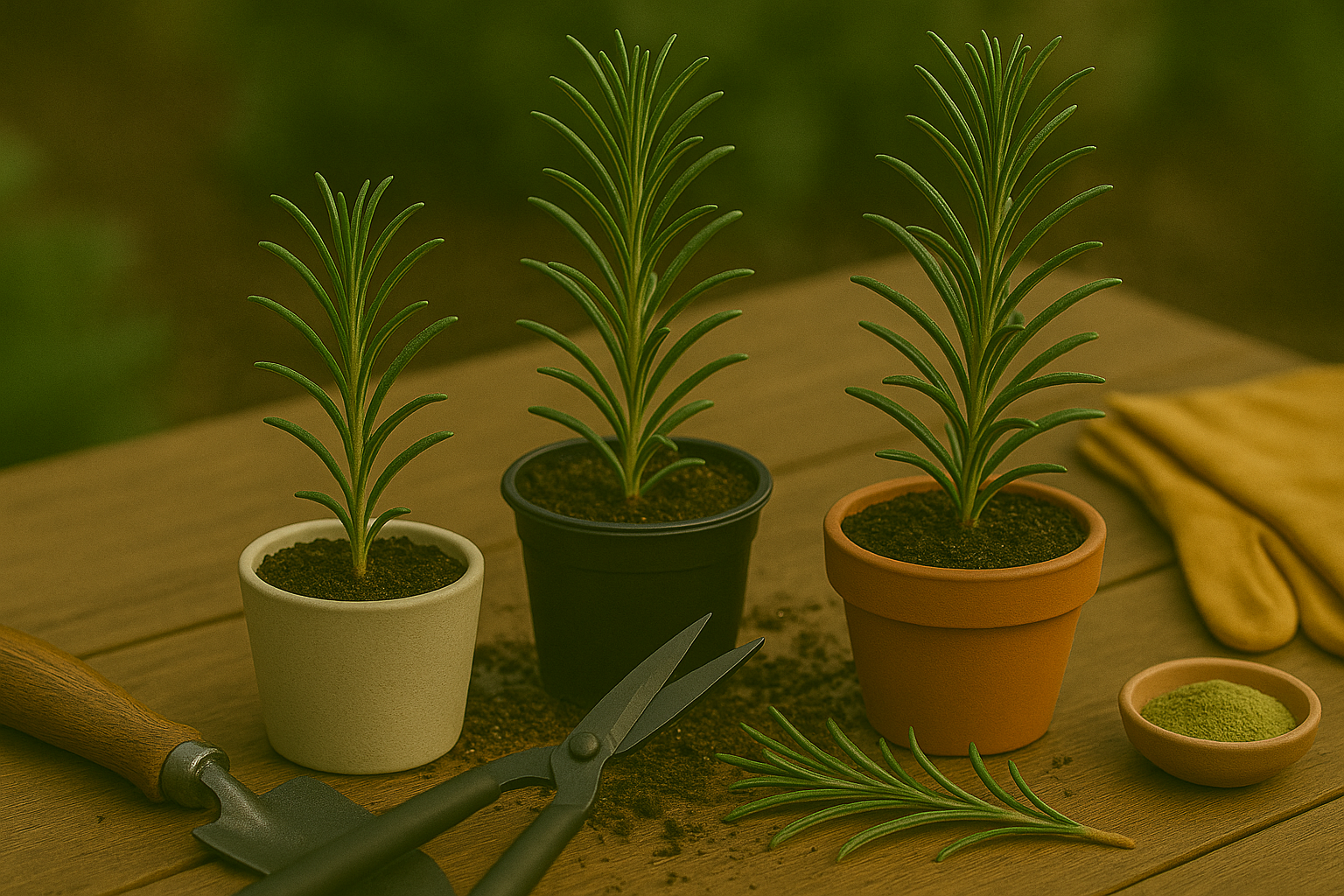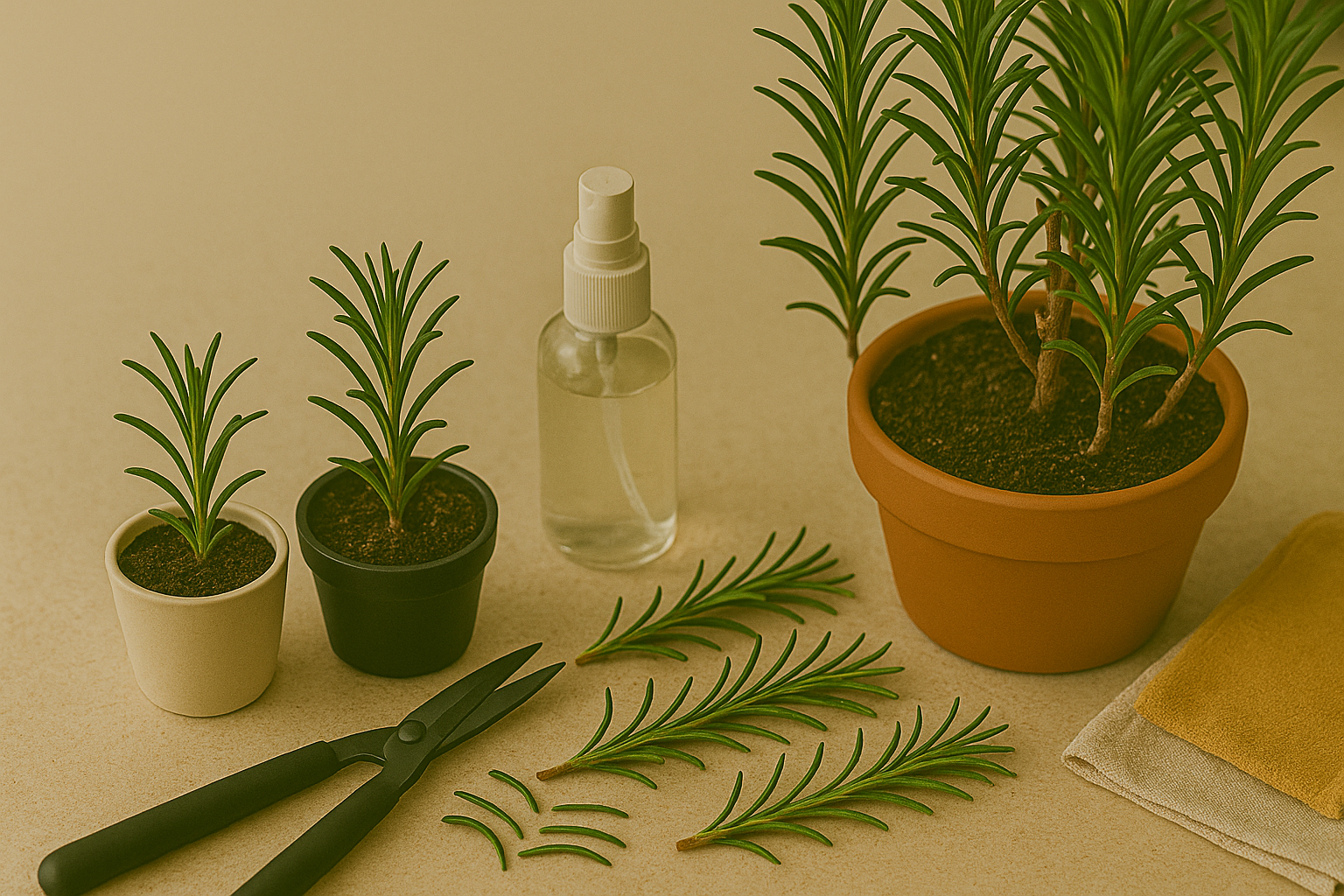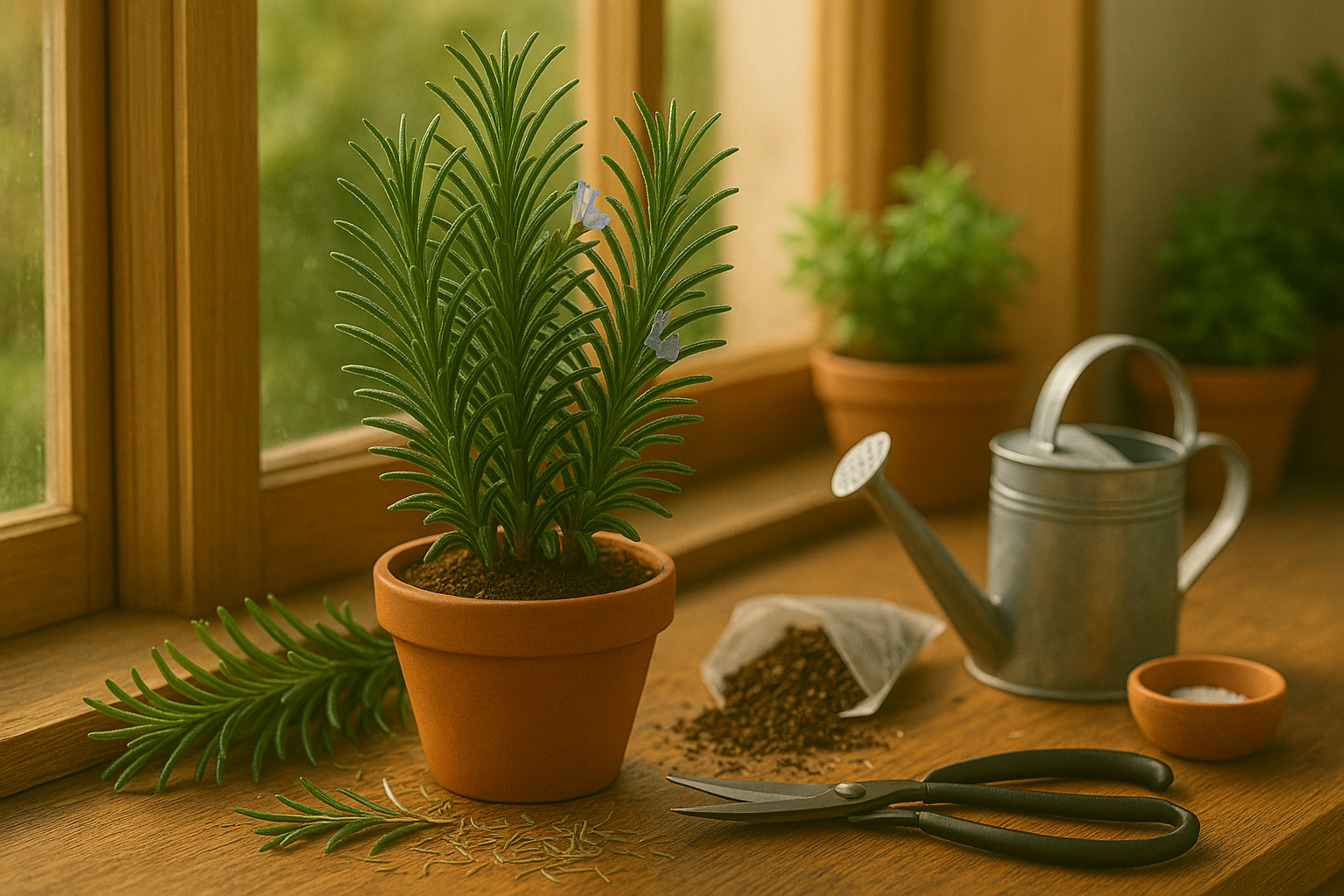Can You Really Grow Rosemary Indoors?
Rosemary is a well-loved herb known not just for its savory, pine-like flavor in everything from roasted potatoes to fresh bread, but also for the invigorating scent it brings to any space. The great news is, you can successfully grow rosemary indoors, allowing you to clip fresh sprigs for cooking all year long.
Beyond its culinary uses, rosemary is believed to have air-purifying qualities, helping refresh your indoor environment while doubling as a beautiful, fragrant houseplant. However, achieving lush indoor growth comes with a few challenges—primarily making sure your rosemary gets enough sunlight, as it craves at least 6-8 hours of light daily, and providing enough room for its roots.
Many beginners struggle with issues like leggy growth, yellowing leaves, or slow progress, but most problems are easy to fix with the right know-how. In this article, we’ll walk you through the best care routines for indoor rosemary, clever troubleshooting for common issues, and smart tips for harvesting so you can keep your herb thriving on a sunny windowsill or countertop.
Whether you have a green thumb or are a first-time grower, you’ll find practical steps to enjoy this aromatic staple indoors all year round.
Choosing Your Plant and the Right Container

When you set out to grow rosemary, you have a few starting options: nursery plants, seeds, or cuttings. Picking up a healthy nursery plant is the quickest way to enjoy rosemary—look for vibrant green leaves and a strong, upright shape. Starting from seed is possible but takes patience since germination is slow and young plants are fragile; for beginners, this route can be tricky.
Taking cuttings from a friend’s healthy rosemary bush is a popular choice as well, since cuttings root fairly quickly and reliably. Whatever your starting method, always choose a pot with drainage holes to prevent soggy soil, which can quickly kill rosemary.
Size matters, too: aim for a container that’s at least 8-12 inches wide and deep to give roots room to spread. As for material:
- Ceramic pots look beautiful and keep roots cool, but they can be heavy and break easily.
- Plastic pots are affordable and lightweight, but they can heat up in full sun and sometimes retain too much moisture.
- Terra cotta is a classic choice—it’s porous, which helps prevent overwatering, but it dries out quickly and may need more frequent watering, especially in summer.
Keep an eye on your rosemary’s growth; if you see roots poking out the bottom, slow growth, or water running straight through the pot, it’s time for a larger container. Try to repot in early spring when new growth begins, giving your plant the best chance to settle into fresh soil and stretch out its roots.
Light, Temperature, and Air
Rosemary thrives in bright, direct sunlight and needs at least six to eight hours of sun each day to stay healthy and produce flavorful leaves. For the best indoor results, place your rosemary plant in a south-facing window where it will catch the most natural light. East- or west-facing windows are good alternatives if a southern window isn’t available. If you notice your plant looking leggy or pale, it might not be getting enough light.
During darker months or in spaces without sufficient sunlight, supplement with a grow light placed just a few inches above the plant, running for about 12 to 16 hours daily. Temperature is another important factor; rosemary fares best between 60°F and 70°F (15°C to 21°C) during the day and prefers slightly cooler nights.
Avoid placing it near drafty windows, doors, or directly above or below heating vents, as chilly drafts and sudden temperature fluctuations can stress the plant and cause leaf drop. Air circulation is equally crucial for rosemary, which is prone to powdery mildew in stagnant, humid conditions.
To help fresh air move around the leaves, periodically open windows or use a small fan set on low nearby, especially if your space tends to be stuffy. While rosemary likes drier air compared to many other herbs, overly dry environments—like those caused by winter heating—can stress the plant.
Grouping rosemary with other plants, setting its pot on a shallow tray filled with pebbles and a bit of water (so the pot sits above the waterline), or lightly misting nearby (but not directly on the foliage) are all ways to slightly raise humidity if needed.
As the seasons change, be mindful of shifting sunlight angles and indoor temperature swings. Rotating your plant for even growth and moving it to sunnier or cooler spots as needed will help ensure your rosemary flourishes all year.
Watering and Soil
Keeping your rosemary plant happy starts with getting the basics of watering and soil right. Unlike some herbs, rosemary prefers its soil to dry out a bit between waterings. Always check the top inch of soil before grabbing your watering can—if it feels dry, it’s time to water; if not, wait a day or two.
Overwatering is a common mistake that leads to root rot. Telltale signs include yellowing lower leaves, soft stems, and a generally wilted appearance despite moist soil. If you notice these, let the soil dry out completely and trim away any damaged roots.
On the flip side, underwatered rosemary will have dry, brittle tips, and the leaves may curl or drop. In this case, water thoroughly and consider mulching the surface to retain moisture.
For potting, choose a well-draining mix to mimic the plant’s native Mediterranean environment—combine standard potting soil with coarse sand or perlite (about one-third of the mix) to improve drainage.
Rosemary doesn’t need heavy feeding; fertilize lightly in spring and again in early summer with a balanced, all-purpose organic fertilizer. Avoid anything too high in nitrogen, as this can lead to leggy growth instead of flavorful foliage.
Remember, moderation is key. With the right watering habits and soil, your rosemary will thrive with minimal fuss.
Pruning, Harvesting, and Everyday Care

Pruning is essential for keeping your indoor plants healthy and attractive. Always use sharp, clean scissors or pruning shears, and snip off any yellowing or dead leaves close to the stem—this helps prevent disease from spreading. To maintain your plant’s shape, trim longer stems just above a leaf node to encourage bushier growth, but avoid removing more than one-third of the plant at a time; over-pruning can shock the plant and stunt its growth.
When it’s time to harvest, pick leaves or stems early in the morning when the plant is least stressed. Gently cut or pinch off outer leaves or stems rather than harvesting from the center—this allows the plant to continue producing new growth. For herbs or leafy greens, harvest only up to a third of the foliage at once, leaving enough greenery for photosynthesis.
Daily care includes checking soil moisture—water only when the top inch feels dry—and wiping leaves with a damp cloth to keep dust and pests at bay. Be sure to look under leaves for telltale signs of spider mites or aphids, such as webbing or sticky residue, and act quickly with a mild soapy water spray if you spot trouble. Good airflow and avoiding wet leaves help prevent fungal issues, keeping your plants vibrant year-round.
Troubleshooting and Common Indoor Rosemary Problems
Caring for indoor rosemary can be tricky, but spotting common problems early makes a big difference. If your rosemary looks leggy or pale, it’s probably not getting enough light—move it to the sunniest window, ideally south-facing, and rotate the pot weekly for even exposure.
Yellowing leaves are another frequent issue, usually caused by overwatering or poor drainage. Let the soil dry between waterings and always use a well-draining pot to prevent root rot.
Watch for pests like spider mites or aphids—tiny specks on leaves or webbing are a dead giveaway. Rinse the plant gently with water or wipe leaves with a soft cloth, and use natural remedies like neem oil if infestations persist.
Fungal diseases can also threaten rosemary, especially if humidity is high or the foliage stays wet. To prevent this, water the base rather than the leaves and keep air circulating with a small fan or an open window.
Prune your rosemary regularly to encourage bushiness and remove dead or diseased branches promptly. If you’ve tried these steps and still see stunted growth or yellowing, it might be time to repot into fresh soil or consider moving rosemary outdoors once temperatures are consistently above 55°F (13°C).
Outdoor conditions often revitalize struggling indoor plants, giving them the strong sunlight and airflow they crave. Keeping these quick tips in mind can help your indoor rosemary thrive with a little extra care and attention.
